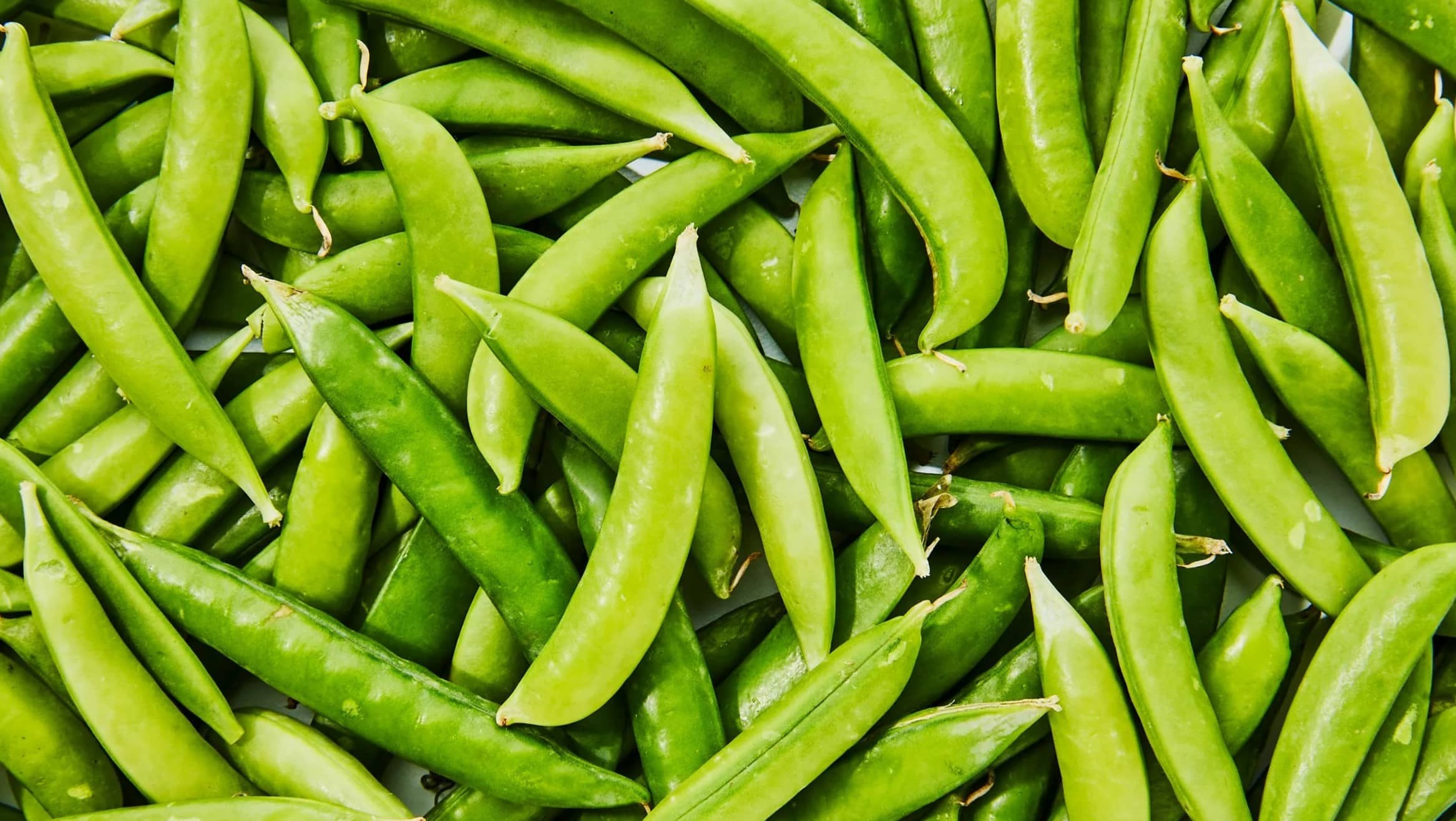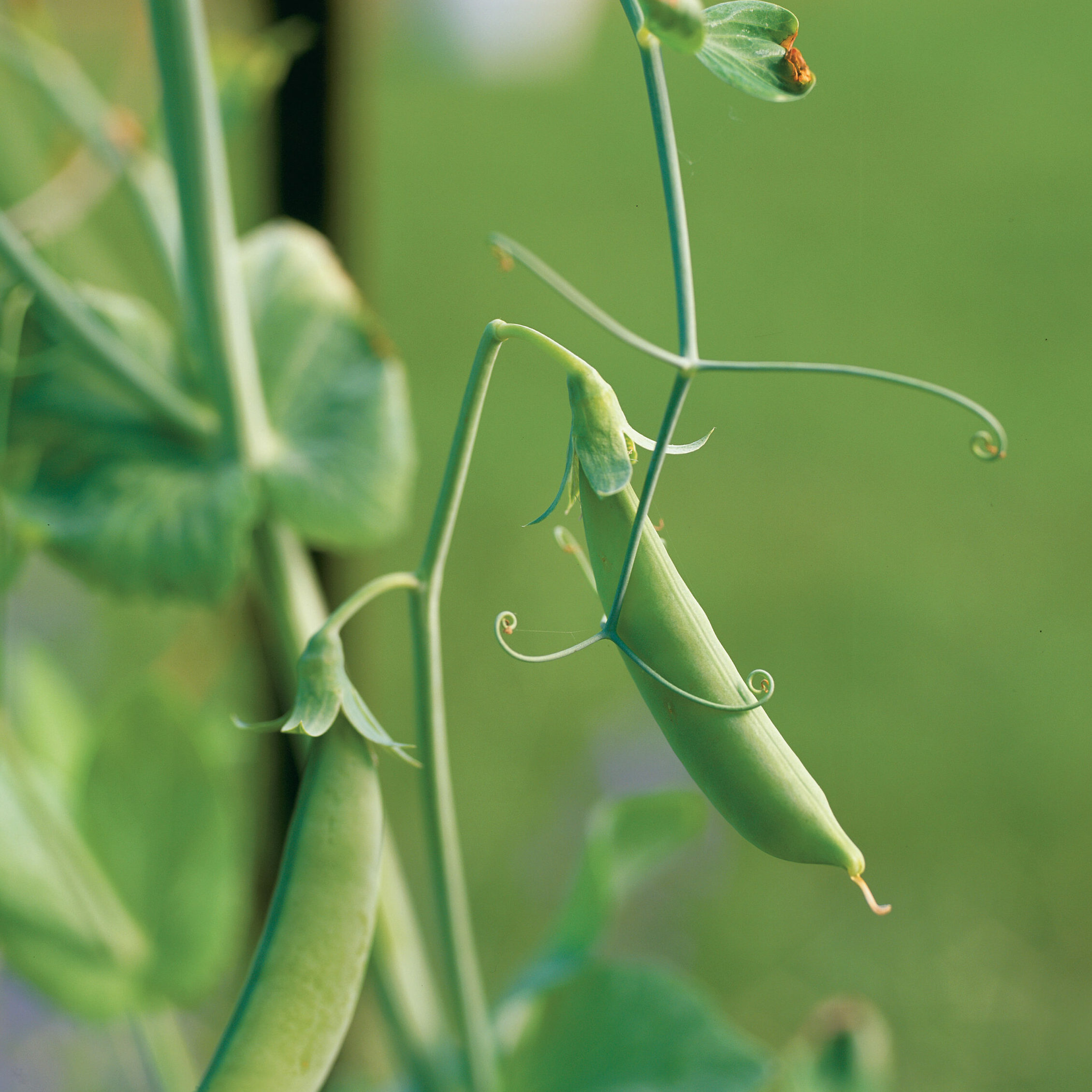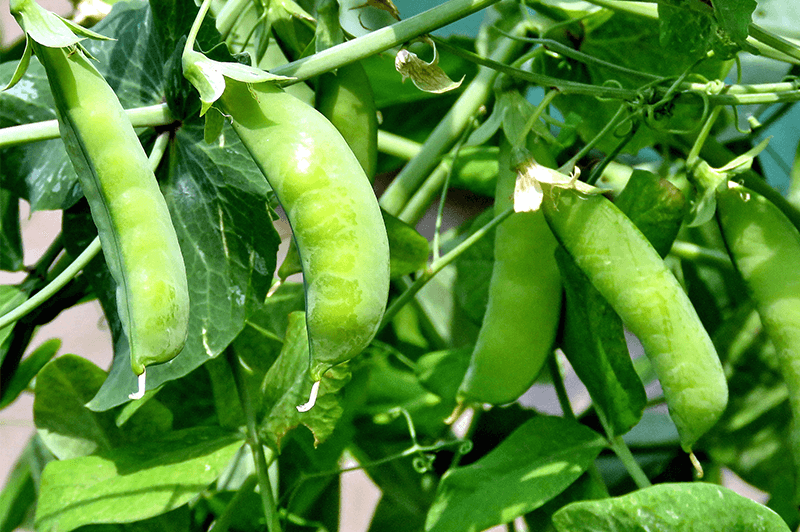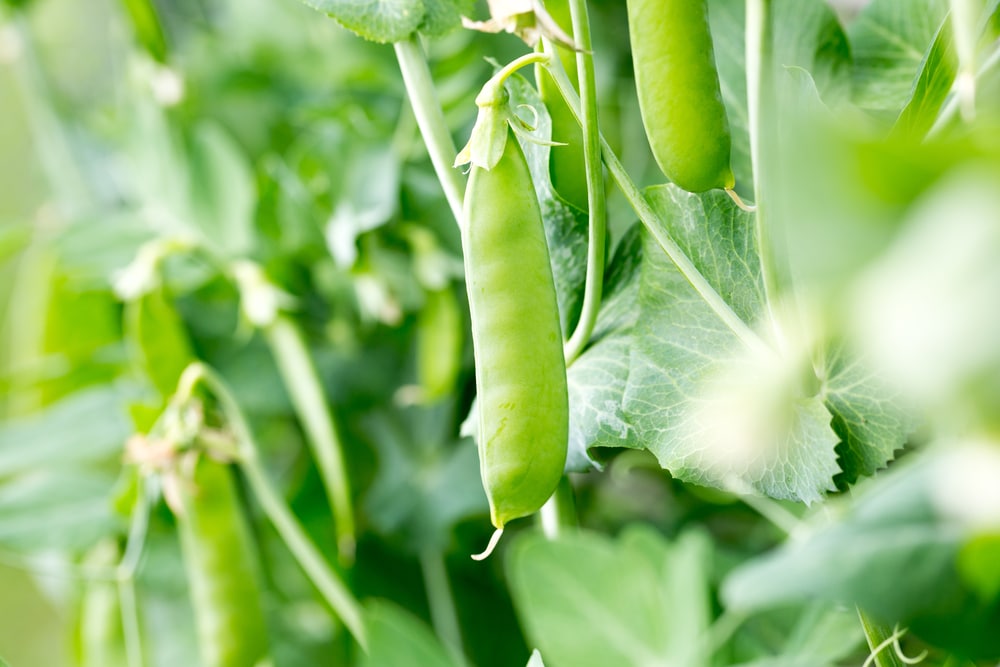
Growing Sugar Snap Peas in Your Garden
If you’re looking to start your own edible garden, planting sugar snap peas is an excellent choice. These tasty, low-maintenance vegetables are easy to grow and can thrive just about anywhere. Plus, they’re perfect for beginners!
Let’s dive into everything you need to know about growing and caring for sugar snap peas.
Quick Facts About Sugar Snap Peas

Sugar snap peas (Pisum sativum var. macrocarpon) are not only delicious and sweet but also packed with nutrients. They belong to the bean family and are particularly loved by kids due to their sweet taste. Sugar snap peas have weak stems, which means they need support to grow properly. Each pod typically contains 6 to 10 peas, which can be enjoyed right off the vine or used in various dishes.
Types of Sugar Snap Peas
There are different varieties of sugar snap peas, each suited to specific growing conditions. Here are the three main types:
- Sweet Peas: These have a soft, sweet flavor. Their pods are tough and not edible, but the peas inside are juicy and delicious. Popular varieties include Oregon Trail, Coral, and Green Arrow. For warmer climates, go for Little Marvel or Wando, which are more heat-tolerant.
- Snow Peas: Snow peas have edible pods and peas. The pods are flat and contain medium-sized peas. These peas are often used in stir-fries, and varieties like Oregon Giant and Dwarf White Sugar are great for cooler regions.
- Sugar Snap Peas: These peas are similar to snow peas but are larger and rounder. Both the pods and peas are edible. Varieties like Burpeeana Early and Sugar Bon are perfect for early planting, while Mammoth Melting Sugar and Oregon Sugar Pod work well for mid-season planting.
How to Grow Sugar Snap Peas

Sugar snap peas are quite adaptable and can grow in USDA zones 3–11. You don’t need to worry too much about the planting zone, though you might need extra care in extreme conditions. Here’s how to get started:
Soil Preparation
Sugar snap peas grow best in well-drained soil with a pH of 5.5 to 7. Make sure the soil is rich in organic matter but not too soggy. If necessary, amend the soil with compost or organic fertilizers.
When to Plant
Timing is key! Plant your sugar snap peas about 4–6 weeks before the last frost of spring, when the soil temperature is around 45°F (7°C). You can plant them as early as mid-February, depending on your climate.
You can also plant peas in the fall if the weather isn’t freezing. Just make sure you plant them 6–10 weeks before the first frost hits. The fall harvest may yield less than a spring harvest, but it’s still worth trying!
Growing Sugar Snap Peas: Step-by-Step

Sugar snap peas are pretty easy to grow. Here’s how to get started:
- Prepare the Soil: Check the pH level (ideally 5.5 to 7) and ensure the soil drains well. Avoid waterlogging, which can rot the seeds.
- Planting: Plant sugar snap peas 1.5 inches deep, spacing them about an inch apart. If planting in rows, space the rows 19–25 inches apart for single rows, or 8–10 inches apart for double rows. Good spacing ensures the plants get enough nutrients, air, and sunlight.
- Germination: Peas usually germinate within 7–14 days, depending on the weather. To jumpstart the process, you can sprout the seeds indoors by wrapping them in a wet cloth and placing them in a warm spot. Once they sprout, plant them in your garden.
Growing Sugar Snap Peas in Containers
:max_bytes(150000):strip_icc()/growing-peas-in-container-gardens-848242-01-6d1ac9bf94694cbda65461264f8b3058.jpg)
If you’re short on space, you can grow sugar snap peas in containers. Choose a container with drainage holes and fill it with nitrogen-rich soil. Keep in mind that containers limit the size and number of plants you can grow, but they can still produce delicious peas. Make sure your peas get at least 6–8 hours of sunlight each day. You can move the container to adjust for shade or too much direct sun.
How to Care for Sugar Snap Peas
:max_bytes(150000):strip_icc()/4-67f18c2c01c545fba427c384760cb732.jpg)
Once you’ve planted your sugar snap peas, they’re pretty low-maintenance, but a little care will go a long way. Here’s what to do:
Weed Control
Weeds can compete with your peas for nutrients. Remove weeds early and often, but be careful not to disturb the shallow roots of your pea plants.
Watering and Moisture
Sugar snap peas don’t need excessive water. Water them when the leaves start turning yellow or the soil becomes hard. Early in the growing season, you’ll need about half an inch of water per week. Once they start flowering, increase the watering to about an inch per week.
Fertilizing

Sugar snap peas don’t need heavy fertilization. If you added compost to the soil, that should be enough. Avoid over-fertilizing with nitrogen, as it can harm the plants.
Supporting Your Sugar Snap Peas

Sugar snap peas need some support to grow properly. You can use a trellis or other sturdy structure to help the vines climb. This maximizes space and improves air circulation for the plant. Climbing peas can grow up to 6–8 feet tall, while bush types are shorter (about 2–3 feet).
Sugar Snap Peas Companion Plants

Certain plants are great companions for sugar snap peas. Beans, carrots, lettuce, melons, spinach, and turnips are all great choices. However, avoid planting peas near onions and garlic, as they can stunt pea growth.
Common Pests and Diseases
:max_bytes(150000):strip_icc()/GettyImages-160914750-593ecb955f9b58d58a525a67.jpg)
Sugar snap peas are generally resilient, but they can face some challenges:
- Aphids: These tiny pests can damage leaves and flowers. Spray them off with high-pressure water or use insecticides.
- Groundhogs: These pesky rodents love to munch on young pea plants. A fence around your garden can help protect your peas.
- Fusarium Wilt: This fungal disease affects pea plants by attacking the roots. Remove infected plants and use fungicides to stop the spread.
Harvesting and Storing Sugar Snap Peas

Harvesting sugar snap peas is easy! The best time to pick them is when the pods are bright green and round. Be sure to pick them before the peas inside become too thick and hard. If you’re growing on a trellis, support the plant while picking to avoid damaging it.
Once harvested, store sugar snap peas in the fridge for up to a week, or freeze them for longer storage. You can also dry them and store them in sealed containers for use in soups and other dishes.
Delicious Recipes with Sugar Snap Peas

Sugar snap peas are versatile and can be used in many dishes. Try this Pea and Feta Salad for a quick, nutritious meal, or make a healthy Sugar Snap Pea and Chicken dish for a protein-packed snack. These recipes are quick to prepare and perfect for busy days!
FAQs for Growing Sugar Snap Peas
1. What are the ideal growing conditions for sugar snap peas?
Sugar snap peas thrive in cool temperatures, ideally between 55°F and 70°F (13°C – 21°C). They prefer well-draining, loamy soil and a sunny spot in your garden. While they need full sunlight, they can tolerate some partial shade, especially in hotter climates.
2. How do I plant sugar snap peas?
Plant sugar snap peas directly into the ground or containers about 1 to 1.5 inches deep and 2 inches apart. Space rows 12 to 18 inches apart to allow for proper airflow. It’s best to plant peas early in the spring or in late summer for a fall crop.
3. How often should I water sugar snap peas?
Water sugar snap peas consistently to keep the soil moist but not soggy. Peas need around 1 to 1.5 inches of water per week, more during hot spells. Be sure to water at the base of the plants to avoid wetting the foliage, which can lead to diseases.
4. Do sugar snap peas need support to grow?
Yes, sugar snap peas are climbing plants and will benefit from some kind of support, such as a trellis or netting. Providing support will help keep the vines upright, prevent them from sprawling on the ground, and make it easier to harvest.
5. When should I harvest sugar snap peas?
Sugar snap peas are ready for harvest when the pods are plump and the peas inside are still small and tender. This typically occurs about 60 to 70 days after planting. Be sure to pick the peas regularly to encourage continuous production.
6. Can I grow sugar snap peas in containers?
Yes, sugar snap peas can grow well in containers, as long as the container is deep enough (at least 12 inches) to allow for the roots to spread. Make sure the container has good drainage, and provide a trellis or other support to help the plants grow upward.
7. How do I prevent pests on sugar snap peas?
Common pests that target sugar snap peas include aphids, slugs, and pea weevils. You can prevent these pests by using organic insecticidal soap, setting up slug traps, or manually removing pests. You can also use row covers to keep insects at bay, especially early in the growing season.
8. What should I do if my sugar snap peas are turning yellow?
Yellowing leaves can be a sign of several issues, such as overwatering, nutrient deficiencies, or disease. Ensure that the soil drains well and that you’re not overwatering. Yellowing can also occur due to a nitrogen deficiency, so try adding a balanced fertilizer to encourage healthy growth.
9. How can I improve the yield of my sugar snap peas?
To improve your sugar snap pea yield, ensure they get full sunlight, well-drained soil, and consistent watering. You can also provide extra support by adding a trellis or using organic fertilizers like compost or fish emulsion to boost growth.
10. Can I save seeds from my sugar snap peas for next season?
Yes, you can save seeds from your sugar snap peas. Allow the pods to mature fully on the plant before harvesting them. Once the pods are dry, remove the peas, and store them in a cool, dry place until next season. Be aware that if you save seeds from hybrid varieties, the next generation may not be true to the parent plant.
Conclusion
Sugar snap peas are a fun, easy, and rewarding vegetable to grow. With proper care, they can thrive in your garden or containers, providing you with a sweet, crunchy harvest. Keep an eye out for pests, water regularly, and be sure to harvest at the right time to enjoy the full flavor. Happy gardening, and enjoy the bounty of your sugar snap peas!

